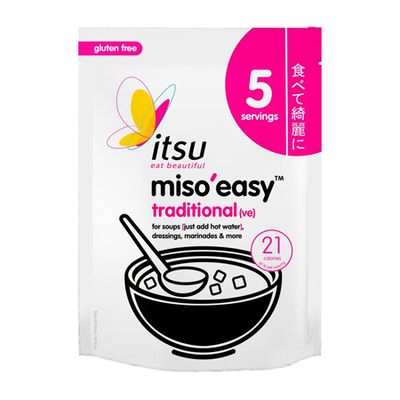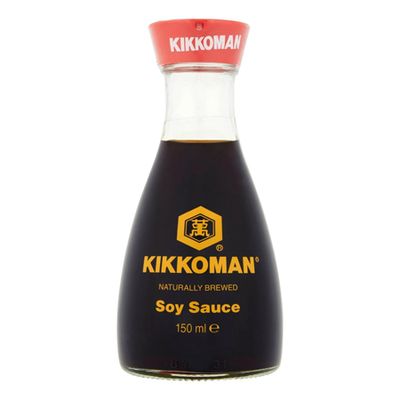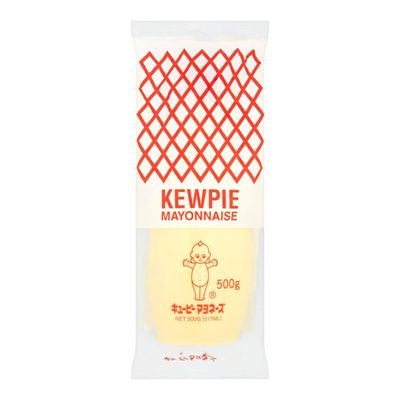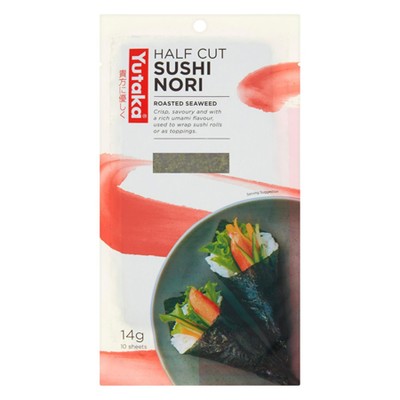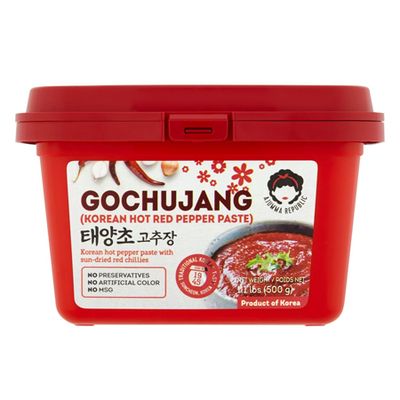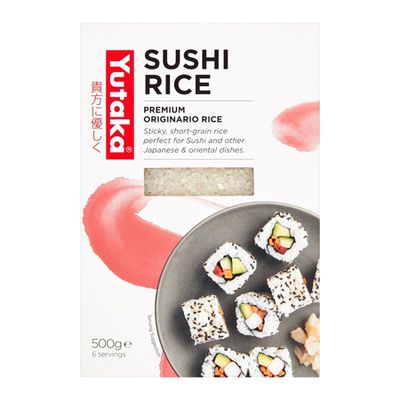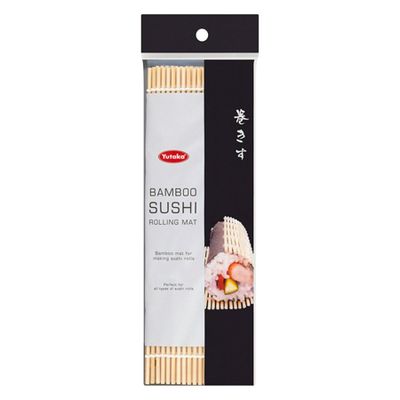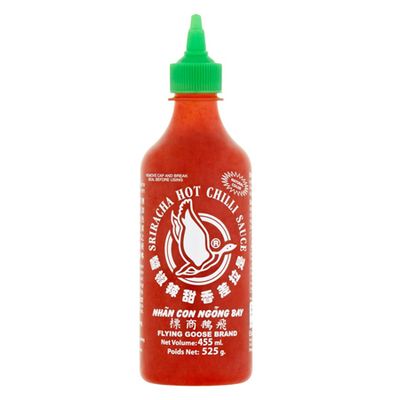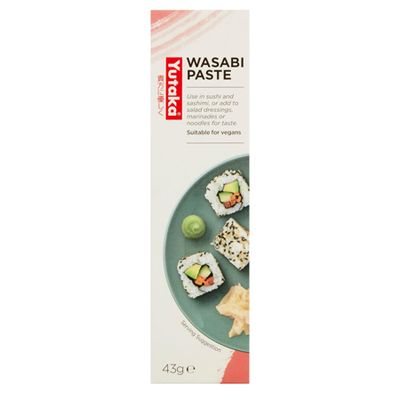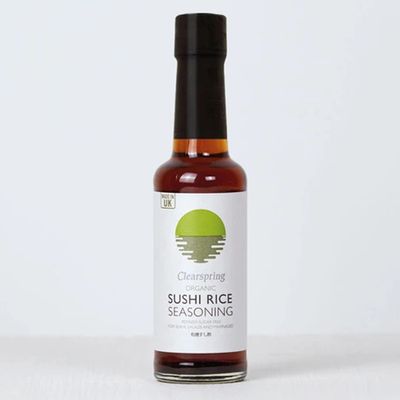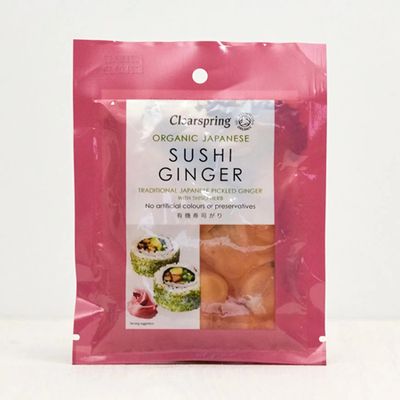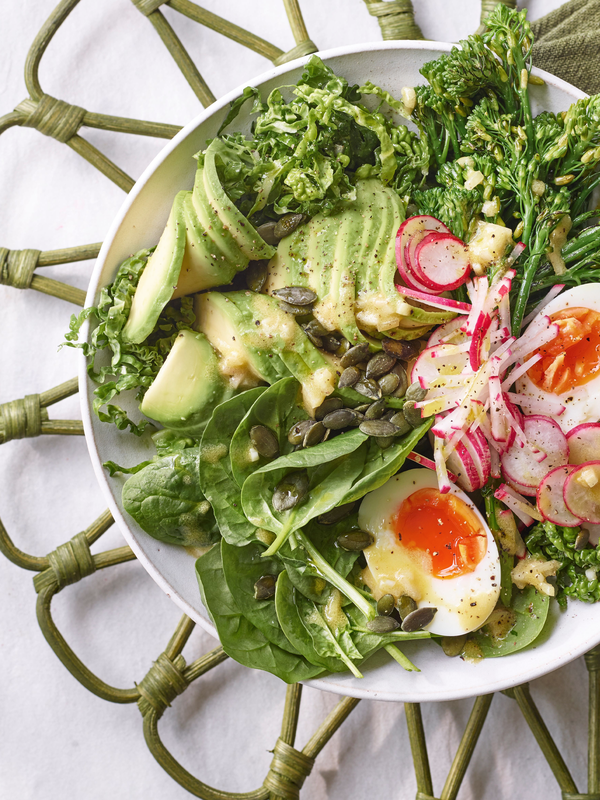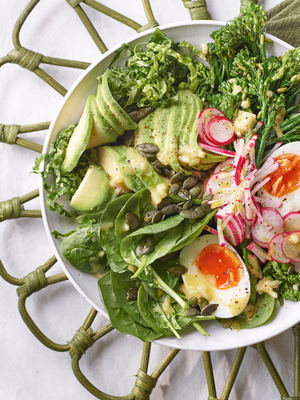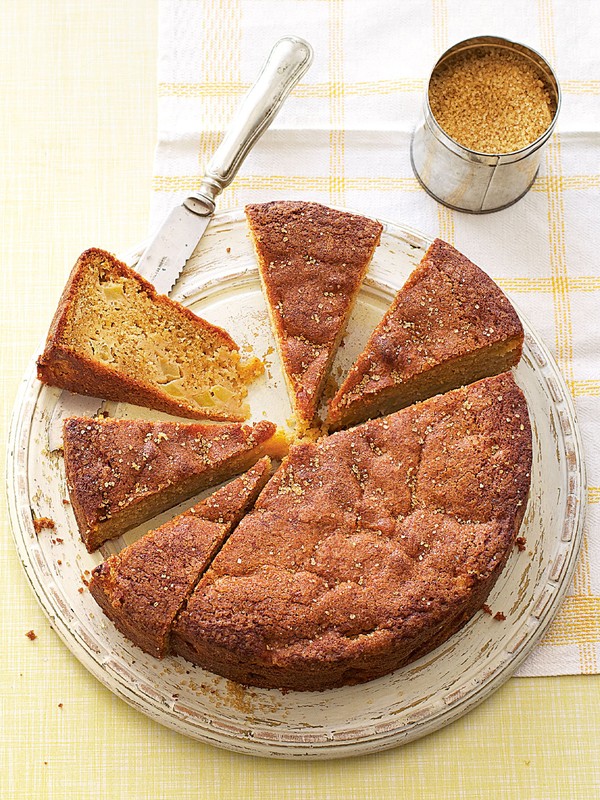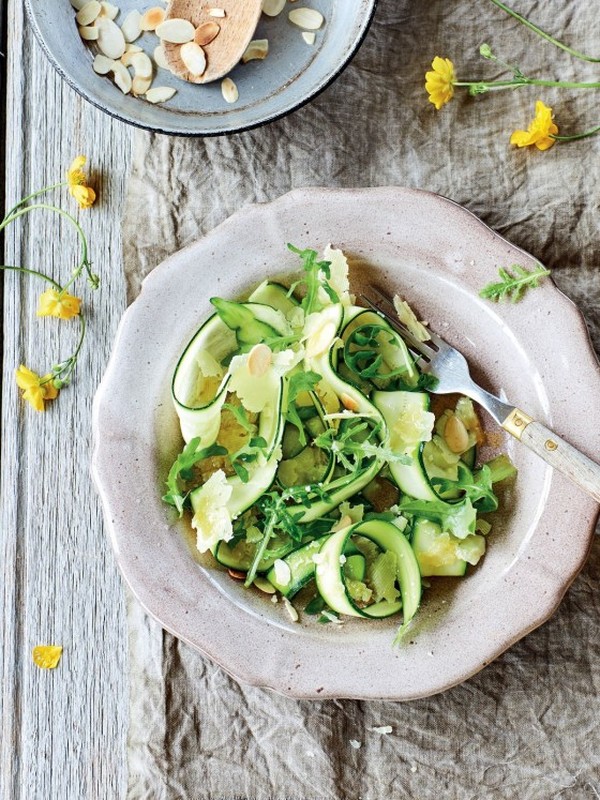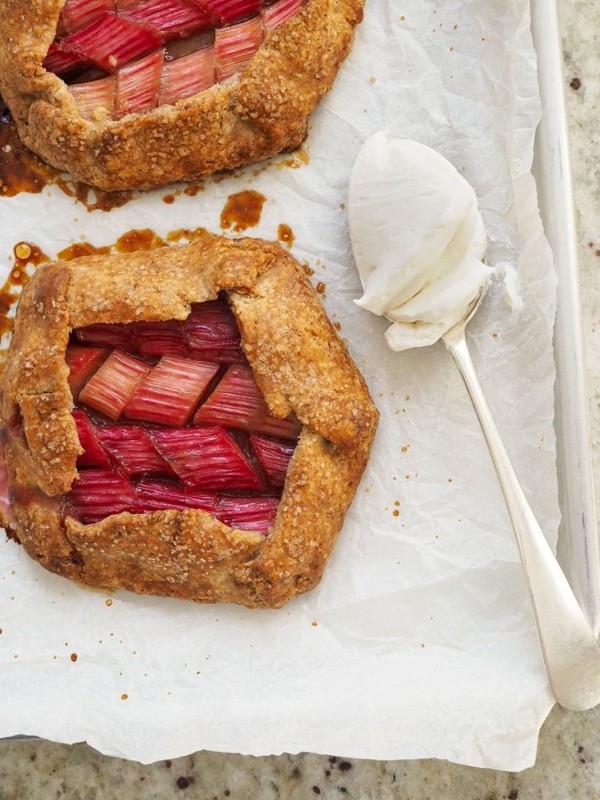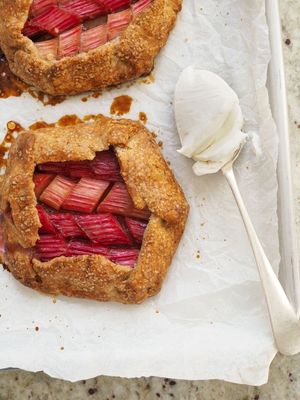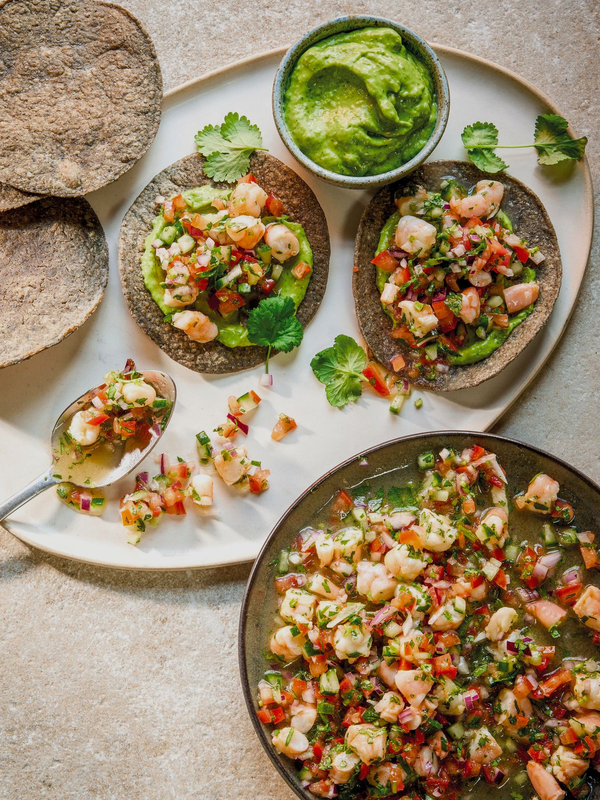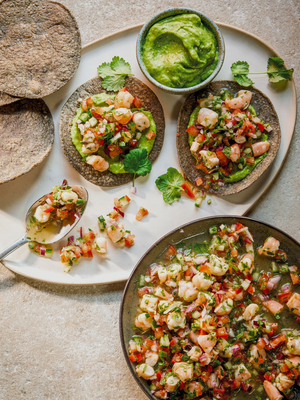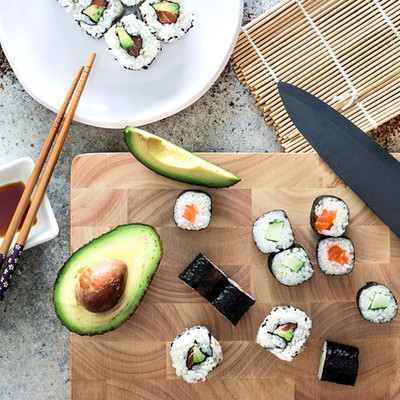
How To Make Sushi At Home
Rowena Roos, Itsu
Firstly , what equipment do you need?
A rolling mat and a sharp knife. No rolling mat? A (clean) tea towel is a great substitute – fold it in half and use it exactly as you would the mat. Otherwise, you can use cling film or foil.
Where can you buy sushi-grade salmon/tuna and what should you look out for?
If you are lucky enough to have a local fishmonger, head there. If not, look online as there are several outlets for buying sushi-grade fish. If buying in person, the flesh should be firm and bounce back when touched, as this shows the fish is fresh. Once home, make sure the fish is stored in a very cold environment (below 4°C) and ensure your cutting board, knife and hands are clean when handling the fish.
What are the best side dishes to accompany your homemade sushi?
My favourite accompaniments are pickled veg (made the same way as my pickled ginger recipe below) and miso soup. You can pick up Itsu's Miso Easy soup from most supermarkets if you’re after a quick option.
And what’s the best way to make nigiri?
To make nigiri, prepare your rice as described below. Wet your hands and, taking around 20g of rice, form it into an oval using the palm of one hand and the other thumb. Turn and compress the rice gently 2-3 times to ensure it doesn’t fall apart when eating. Thinly slice your fish or vegetable of choice and place over your rice, pressing gently to adhere the ingredients. If you can get hold of wasabi paste add, a dab between your rice and topping for extra deliciousness.
How To Make Sushi Rolls
INGREDIENTS
For each recipe below, you will need:
- Cooled sushi rice (rice cooked as per pack, then mixed with 1 tbsp of sushi seasoning for every 150g of cooked rice while still warm. Leave to cool).
- Nori sheet
- A rolling mat of choice
- Chopsticks
Salmon & Avocado Rolls:
- ¼ avocado per roll, cut into 3 slices
- 50g of sushi-grade salmon cut into small cubes (or smoked salmon strips if you don't like raw salmon)
Spicy Tuna Rolls:
- 1 big pinch of sushi ginger
- 50g of sushi-grade tuna cut into small cubes
- A drizzle of sriracha or gochujang if you like it hot
California Rolls:
- Crab sticks (2 per roll)
- ¼ avocado per roll, cut into 3 slices
- Japanese mayo (optional)
Veggie Maki Rolls:
- Green beans, sliced
- Grated carrots
- ¼ avocado per roll, cut into 3 slices
- Pickled ginger
- Mint leaves
METHOD
- Choose your ingredients from the selection above.
- Flatten out your rolling mat and place a nori sheet across the top.
- Add a few scoops of rice to the centre of the nori sheet (you can add more rice as you spread).
- Spread the rice over ¾ of the nori sheet, leaving the top ¼ empty.
- Depending on the type of sushi you have chosen, add one ingredient at a time. creating a long horizontal strip across the rice, piling up one ingredient at a time.
- To roll, bring the end of the mat up and over the filling, squeezing to keep the roll tight.
- Keep rolling and squeezing until you have a fully sealed sushi roll.
- Remove the mat and slice the roll into pieces.
Hacks & Tips:
- Dipping your fingers in water will stop the rice sticking to them. Wetting the knife will also give a cleaner cut.
- Only covering 3/4 of the nori sheet and keeping your filling tight together will make the sushi easier to roll.
- No sushi rice? Short grain or jasmine rice will work too.
- No sushi seasoning? Replace with 80ml of rice vinegar (or cider vinegar as a substitute), 2-3 tbsp of sugar and 7g salt mixed together.
- You can pickle your own sushi ginger easily – soak ginger strips for 15 minutes in water, heat 150ml of sushi seasoning with 150ml of water, add the drained ginger to heated liquid and simmer for 2-3 minutes. Pour into a clean container and leave for 15 minutes before using.
- No nori sheets? Lettuce leaves can work too! Just dry them beforehand.
Visit Itsu.comInspired? Here two more chefs offer their top tips and recipes…
Justine Murphy, MyMuyBueno
Bamboo mats are available in supermarkets and you won't need any other new equipment, while Chinese supermarkets are more cost effective for buying your rice, vinegar and nori. Most fish in sushi restaurants will have been frozen first, rendering them safe to eat, as commercial freezers are used to blast freeze fish which kills off parasites in 24 hours. If you want to use fresh fish from your local supermarket then tuna and farmed (not wild) salmon are the safest options. Farmed Scottish salmon has been proven to be well raised in terms of not having parasites and is delicious.
Maki Rolls (Serves 4)
INGREDIENTS
- 400g of sushi rice
- 750ml of cold water
- 2 tbsp of rice vinegar
- 4 sheets of nori seaweed
- 100g of fresh good-quality salmon
- 50g of cream cheese
- ½ a cucumber, thinly sliced lengthways
- 1 avocado, thinly sliced lengthways
METHOD
- Rinse the sushi rice in a sieve under cold running water. Then place the clean rice into a medium saucepan with the fresh cold water. Leave it to soak for 30 minutes, then turn on the heat. Bring to the boil then immediately reduce the heat to low, cover and cook for 10 minutes until the water has been absorbed. Stir to ensure the rice isn’t sticking to the pan. Remove from the heat and leave the lid on for a further 5 minutes to ensure it is cooked.
- Using a silicone spatula, loosely spread the rice out on a large tray without squashing it. Drizzle the rice vinegar evenly over the warm rice and use the spatula to gently stir it in. Leave the rice to cool completely.
- To fill your sushi, put a small bowl of iced water next to you for wetting your hands continuously, so the rice doesn’t stick as you work. Holding your nori sheet horizontally, cut a quarter off the top with scissors. I find this helps to form a better roll and the rest of the nori is excess that is not needed. Place your trimmed nori sheet on a bamboo sushi rolling mat, with the edge of the sheet meeting the edge of the mat closest to you.
- Evenly spread some rice over the sheet to form a layer about 2mm deep, leaving 2cm of space at the top. Do not push your rice down or load it up too much. Add your fillings of choice in a horizontal line across the rice, about 1cm up from the edge closest to you.
- To roll your sushi, lift the bamboo mat and start rolling. Work from the middle, as opposed to the edges, to roll the nori sheet over the contents, keeping the filling in place with your fingers. Roll firmly but not too hard until your nearest edge meets the empty space on the other side.
- Wet your finger and run some water along the clear edge, then continue rolling to stick the ends together. Press gently with your fingers to close the roll, then cut into 6 to 8 even pieces with a sharp knife, discarding (eating) the end pieces.
- Repeat the filling and rolling process to use all the nori sheets. Enjoy your sushi with soy sauce, pickled ginger and wasabi.
Visit MyMuyBuenoPrivateChefs.com
Sara Lewis, Vintry & Mercer
You can usually get all the dry ingredients from the world aisle at any regular supermarket. However, you can also purchase a sushi kit on Amazon for about £20. This will include everything from the rolling mat, chopsticks, wasabi, pickled ginger, and soy sauce. You do still need to buy your protein or veggie fillings though. Be patient with sushi making. It is delicate so needs a lot of love and time. You will reap the benefits when you tuck in, especially with a nice cold glass of white wine.
Sushi Rolls
INGREDIENTS
- 500g of sushi rice
- 4 tbsp of rice vinegar
- 800ml of water
- 50g of sugar
- Nori sheets
- Soy sauce for dipping
- Pickled ginger and wasabi
Filling ideas:
- Sweet potato, avocado and red pepper
- Crab (white picked meat), avocado, lime zest and Japanese or regular mayonnaise
- Raw thinly sliced tuna, tobiko, thinly sliced carrot and cucumber and Japanese or regular mayonnaise
- Chicken, sweet chilli sauce and avocado
METHOD
- Bring the rice vinegar and sugar to the boil. Once the sugar has dissolved, leave to cool.
- Bring the water to the boil and add the sushi rice. Cook gently for a few minutes, stirring so that it does not stick to the bottom. Remove from the heat and cover with parchment paper and a lid or tightly wrapped tin foil. Put the pan in the oven and cook at 180°C for around 10-12 minutes. Check to make sure the top layer of rice is cooked. If so, take out of oven.
- Remove baking paper and tin foil. Transfer the hot rice into a large bowl, gently and without stirring the rice too much, and mix in the vinegar and sugar mix and a pinch of salt. Taste and add a little more vinegar if needed.
- Let the rice cool and prepare your fillings.
- To roll the sushi, wrap the rolling mat in cling film to create a smoother surface and to keep the mat clean.
- Lay your nori sheet on the mat, rough side facing up. Scoop about 200g of cooked rice onto the mat. Dip your fingers into the bowl of warm water to stop the rice sticking to your hands. Gently spread the rice with your fingers to completely cover the nori sheet.
- Lay your fillings horizontal about 2 inches from the end of the nori sheet closest to you. Your fillings should stick out the ends a little to ensure the sushi rolls are completely filled. Using the mat, fold the nori sheet over your filling and tuck in nicely to form a circle. Repeat this folding until your nori sheet is completely wrapped. If the edge does not stick properly then dab a tiny bit of water on the edge and it will stick to the roll nicely. You can use your mat to shape the sushi into tight circles, squares or even triangles.
- Finish your sushi with a little topping of flavoured mayonnaise (such as lemon, yuzu or chilli), a sprinkle of sesame seeds, caviar or thinly sliced avocado layered all the way along your roll.
- When cutting your sushi, cut in half first and then in halves again until you get 6-8 evenly cut slices. You can either trim off the ends, so you don’t have anything sticking out of the edges if you prefer, but this is not necessary.
Visit VintryAndMercer.com
Shop Our Sushi Essentials Below...
DISCLAIMER: We endeavour to always credit the correct original source of every image we use. If you think a credit may be incorrect, please contact us at info@sheerluxe.com.
